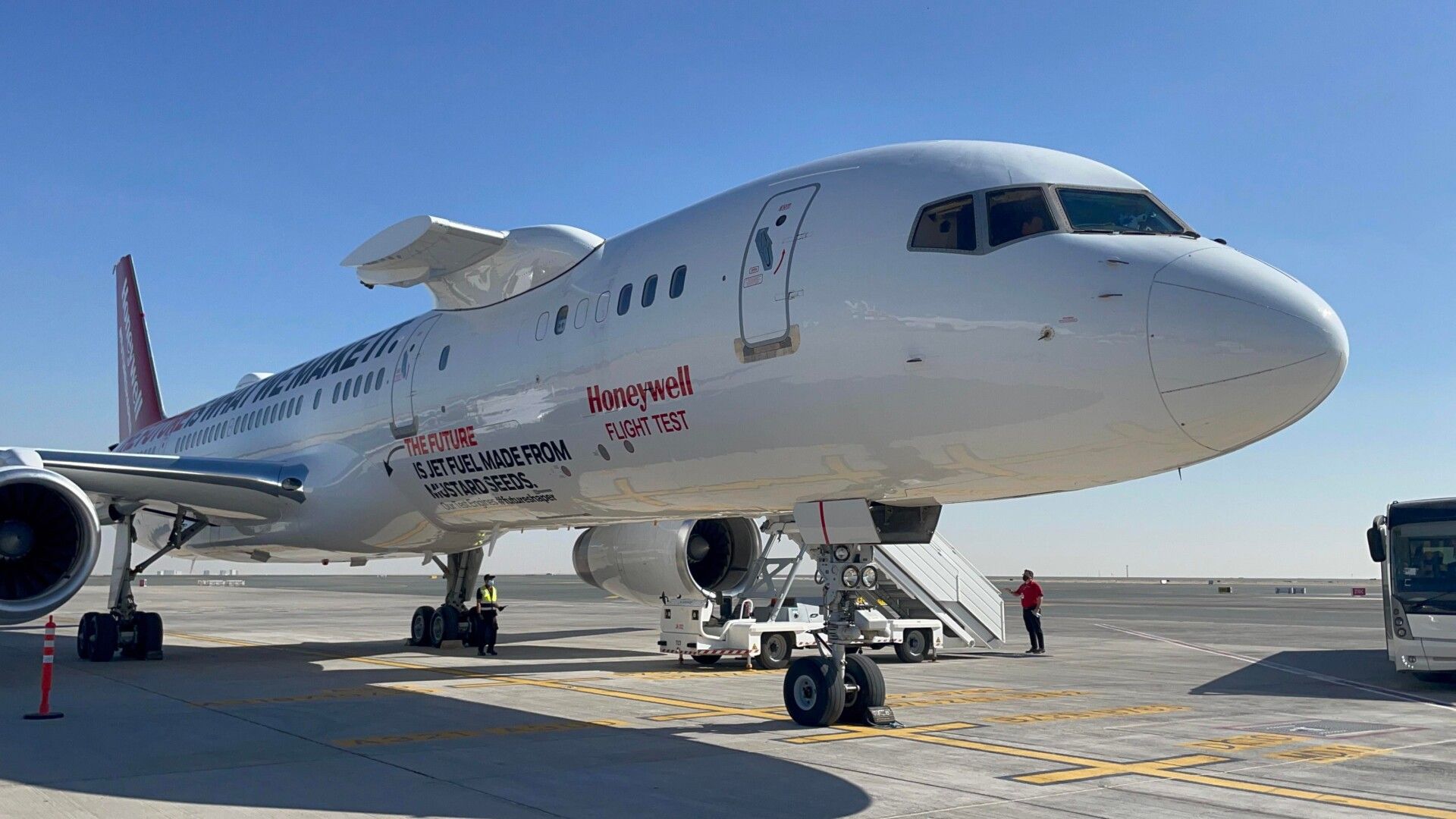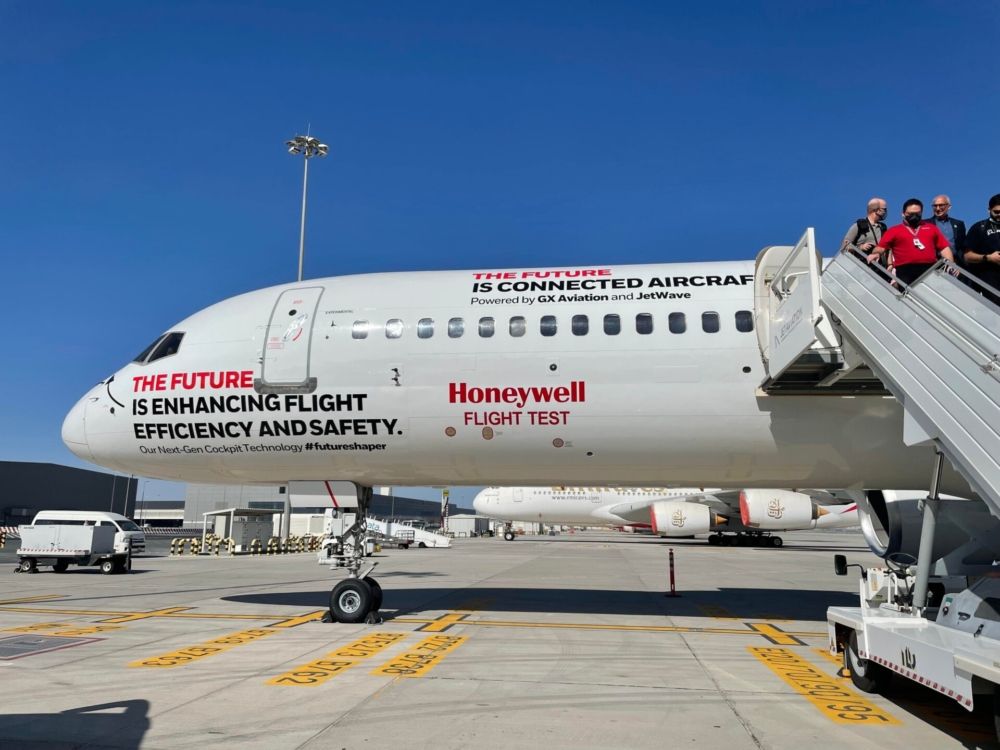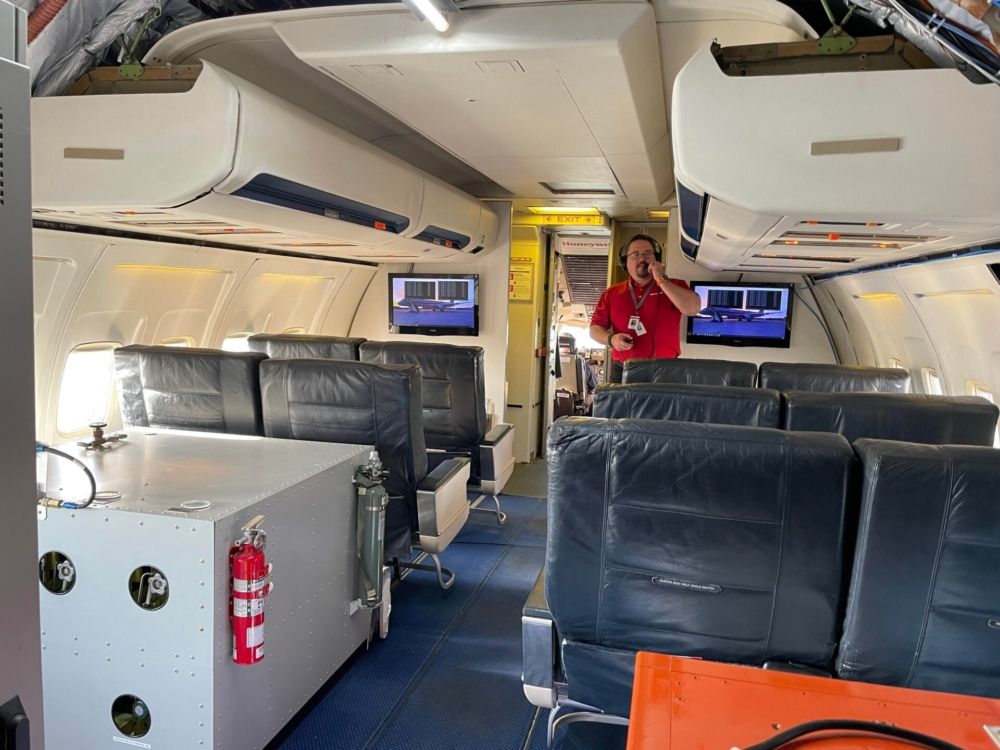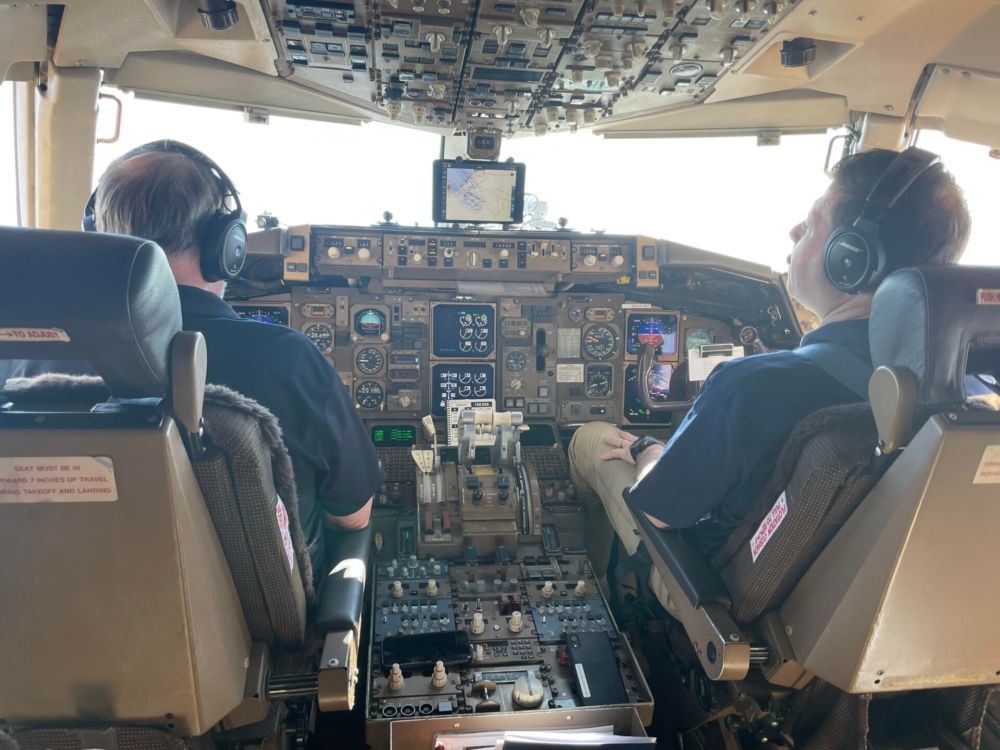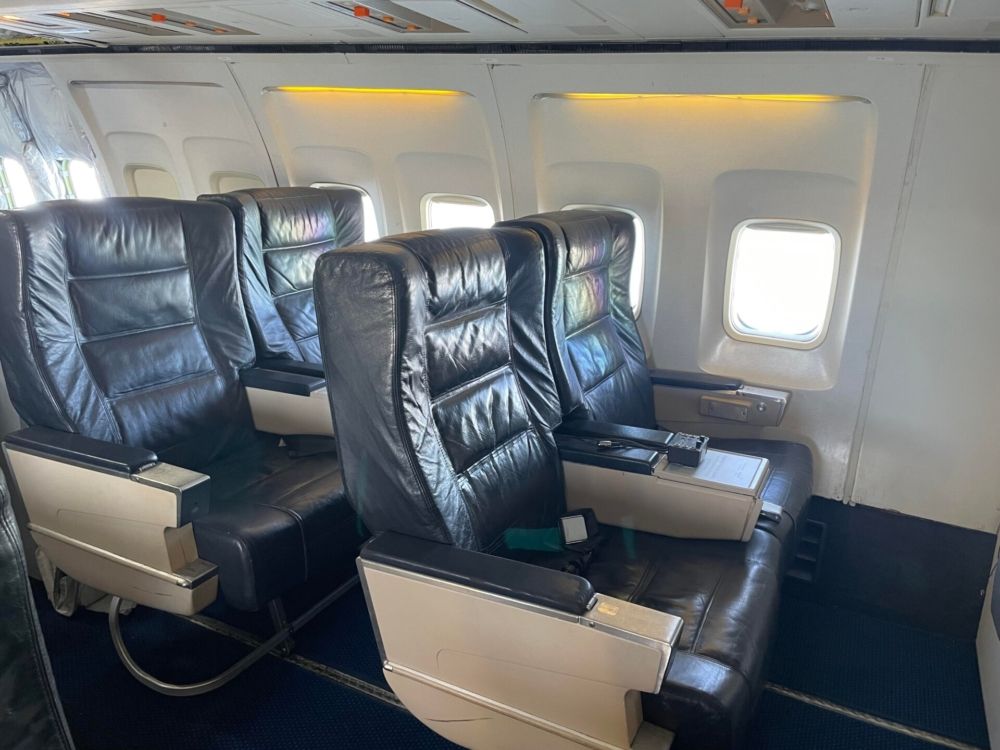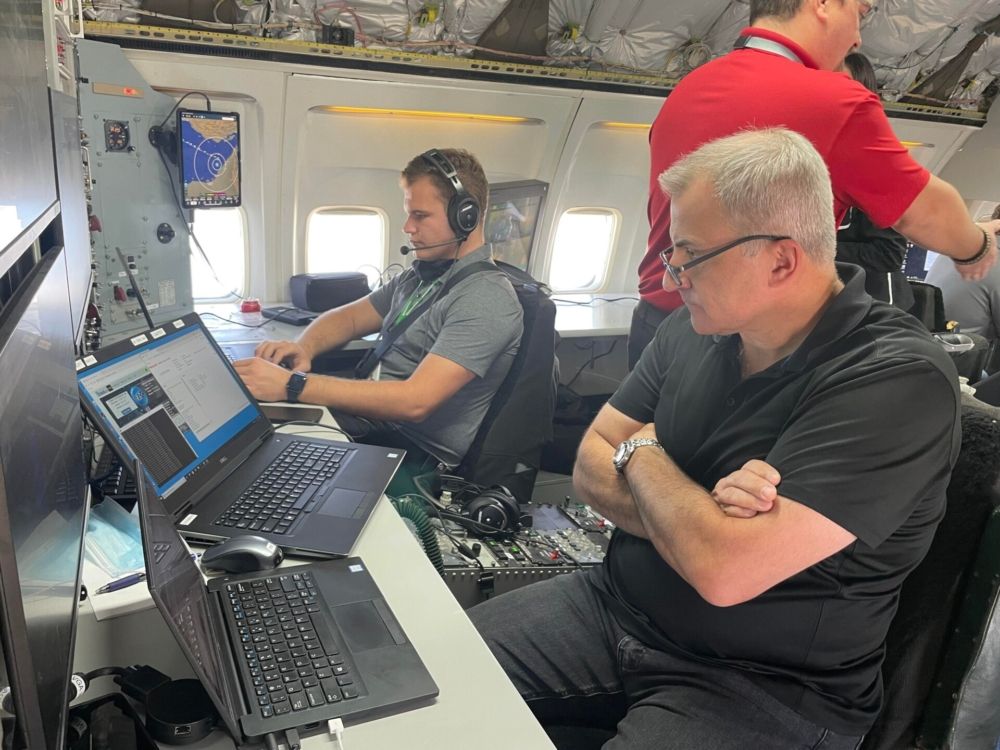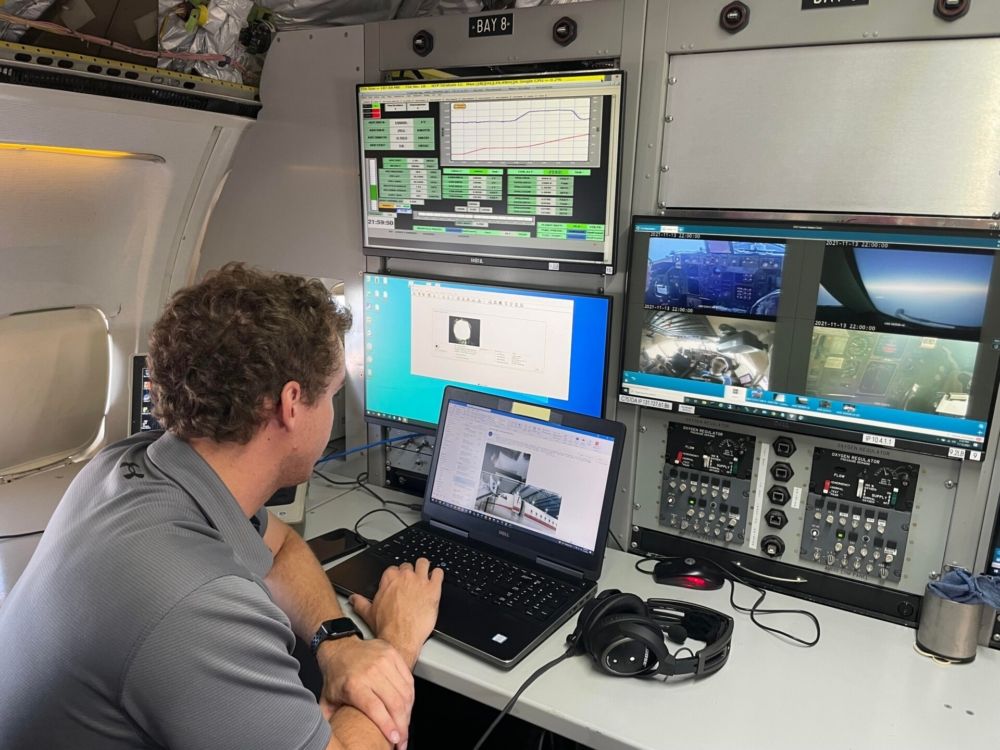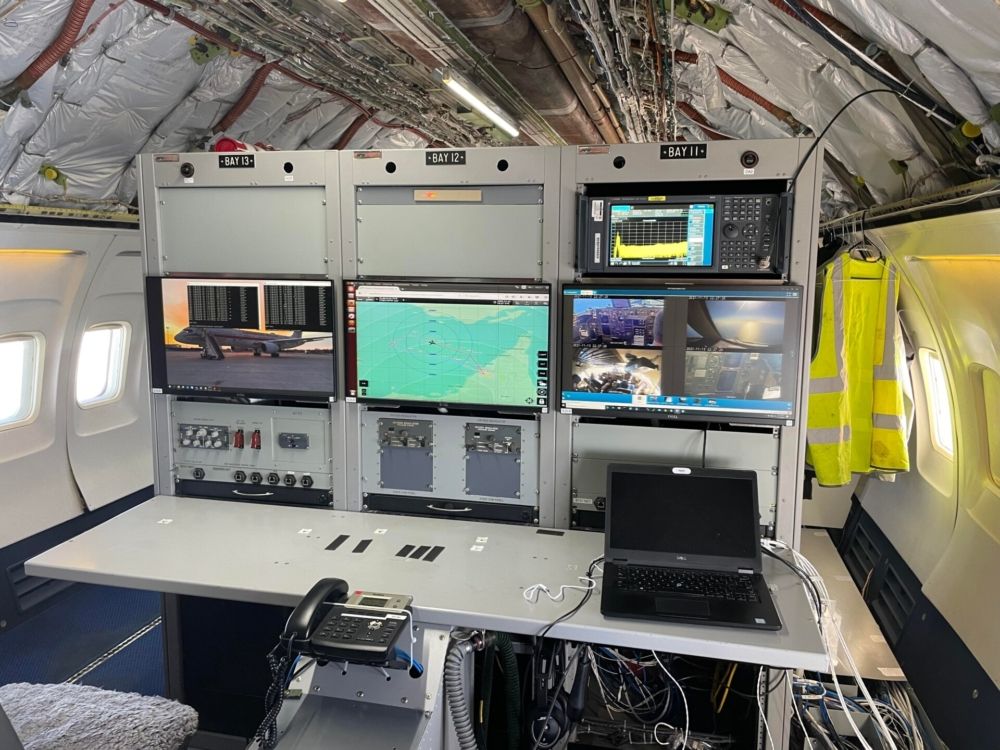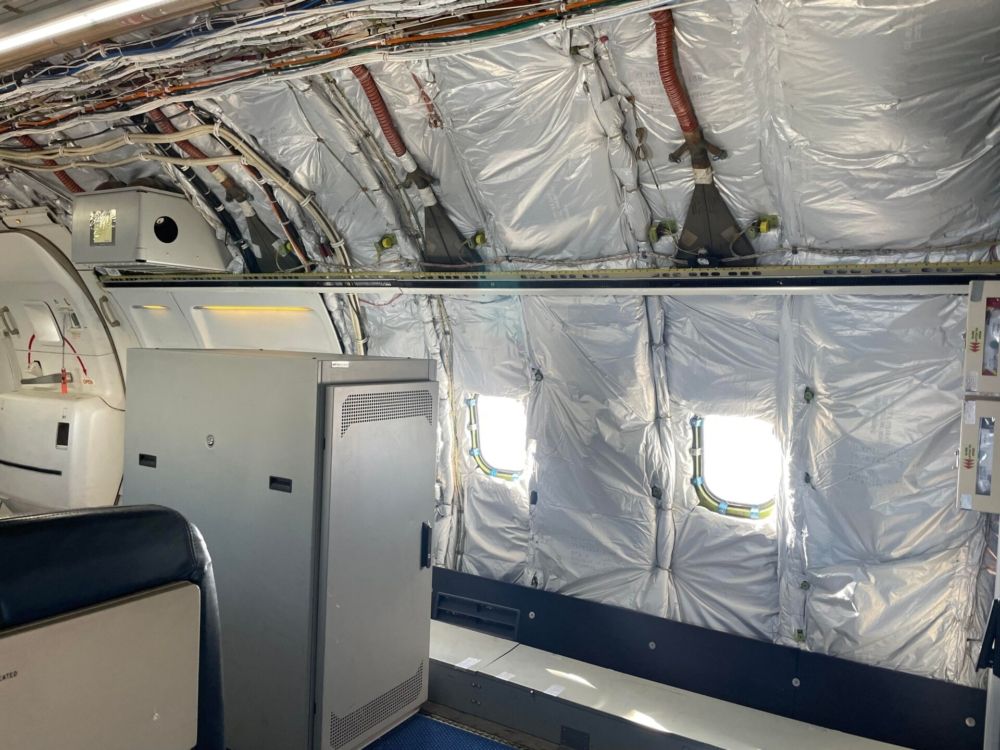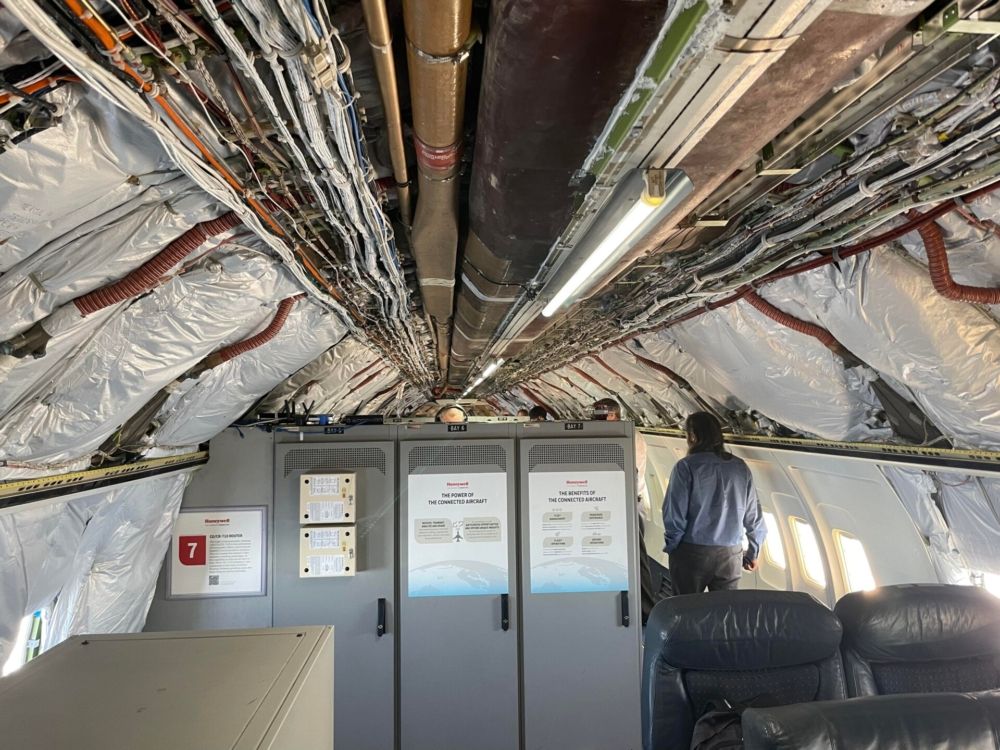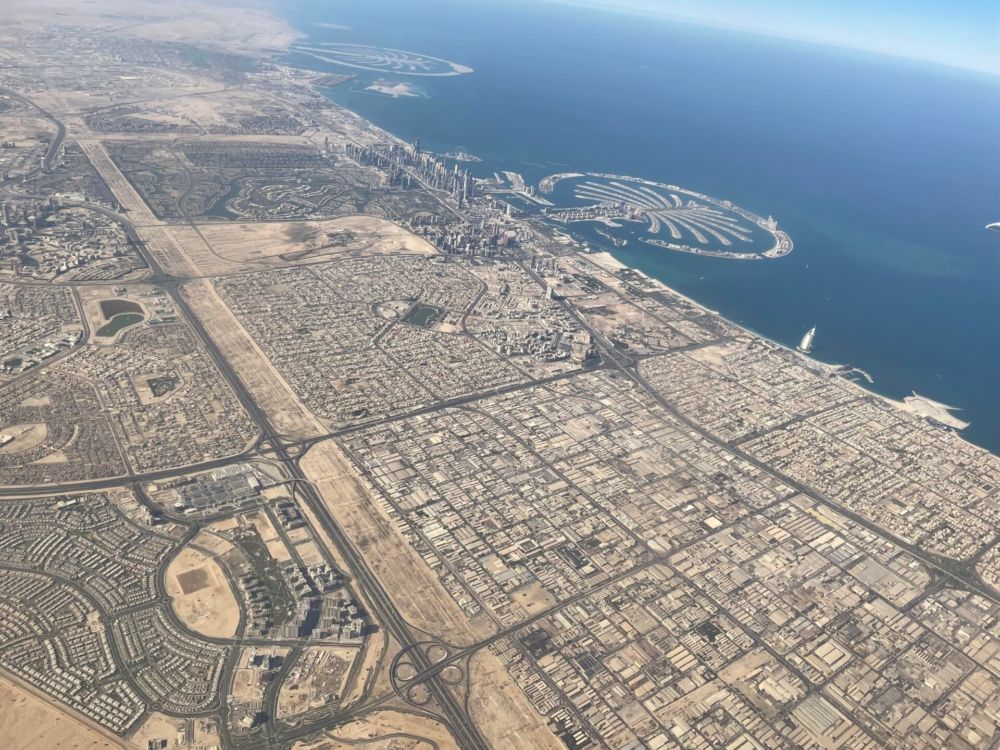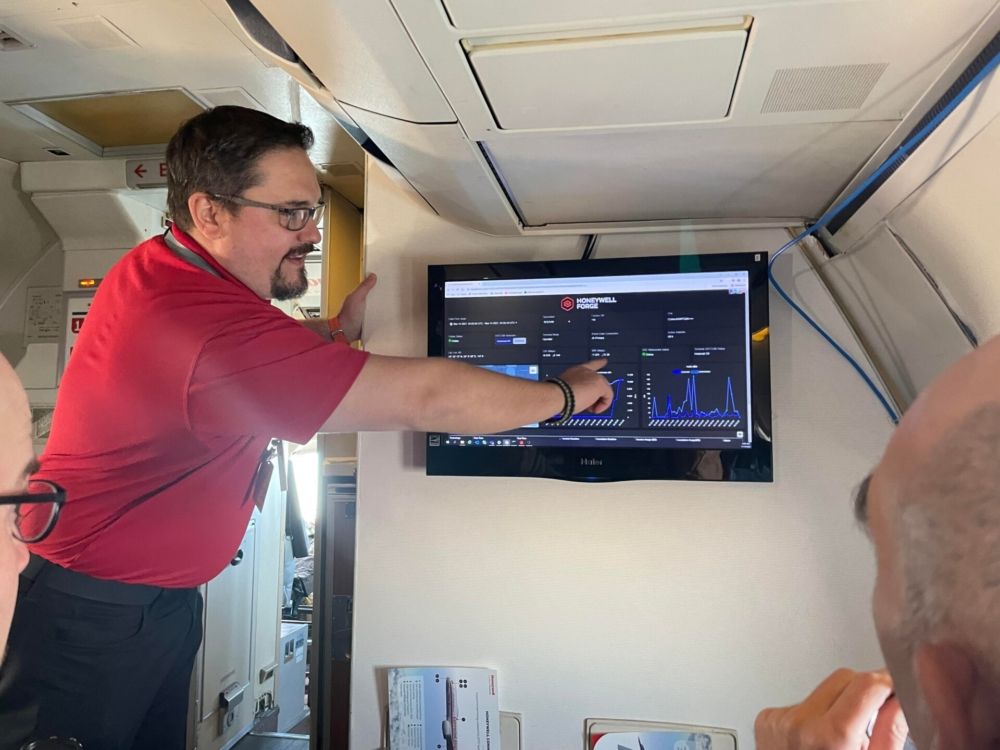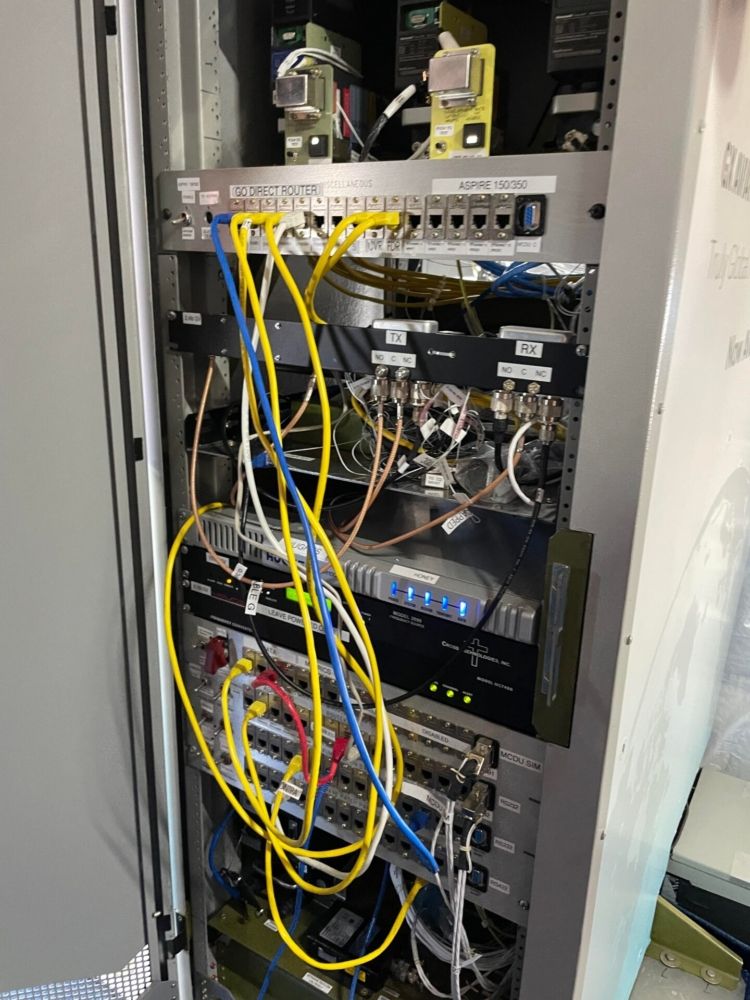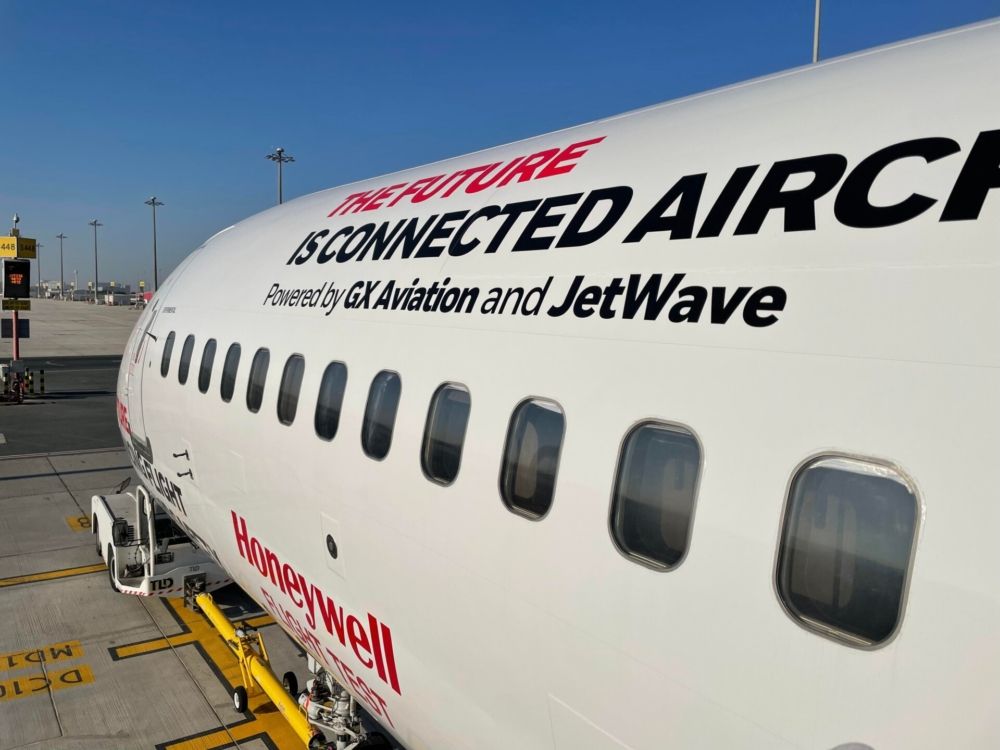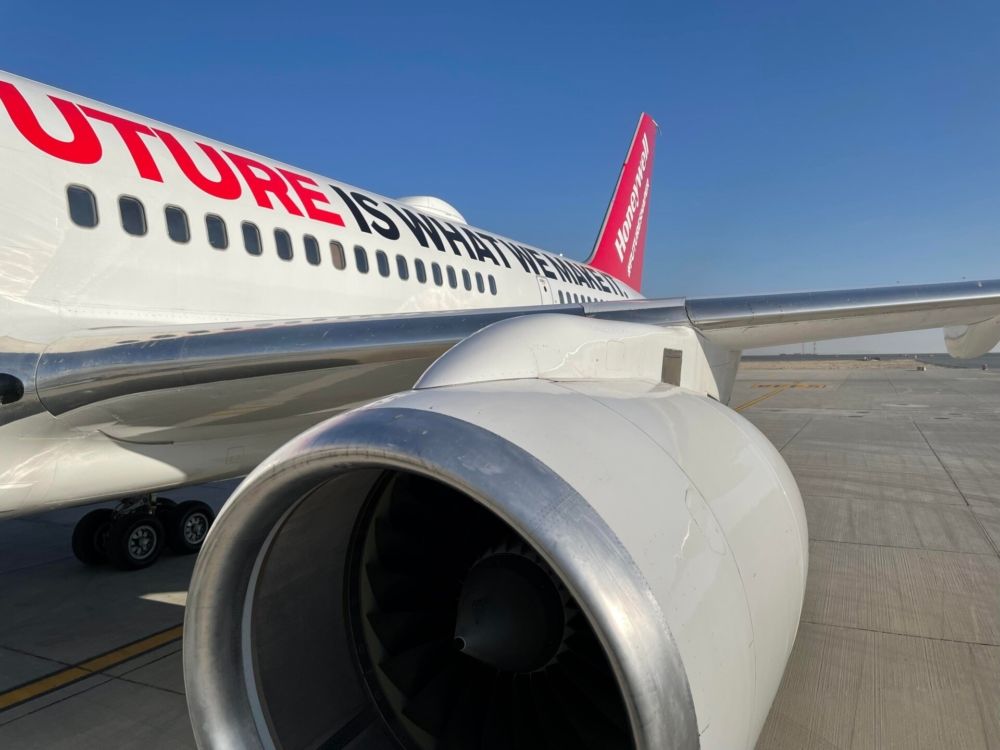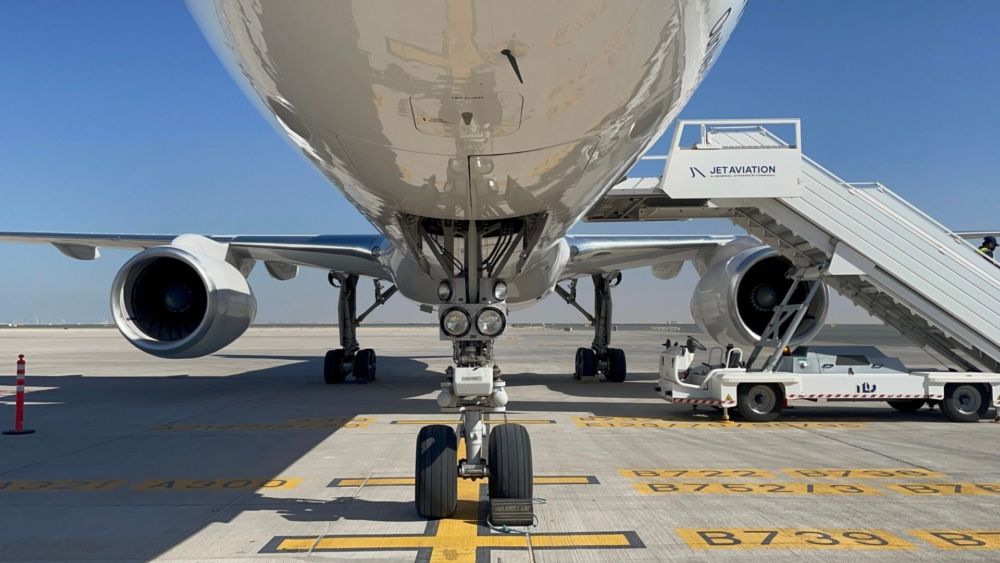Honeywell is well known for its industry-leading solutions in technology for aviation. It is also well known for operating an aging but incredibly reliable and very interesting Boeing 757. Simple Flying got to ride along with the Honeywell team on a demonstration flight, testing out some of its latest satellite communications (SATCOM) technology.
Honeywell’s Boeing 757 testbed dates back to 1983, and was the fifth 757-200 to roll off the production line. Ordered by Eastern Air Lines, the aircraft stayed with the airline until 1991. It then spent a few years with MyTravel Lite, a British leisure carrier, before arriving with Honeywell Aviation Services in 2005. Registered as N757HW (a super cool registration for Honeywell’s testbed), it is regularly used to test radars, data links, engines and more.
What’s inside the 757?
Entering an experimental aircraft like the Honeywell 757 is not like entering any other aircraft. For a start, there are no shiny cabin crew waiting to greet you onboard. Rather, the aircraft is occupied by a team of incredibly smart, wonderfully passionate engineers, and a whole lot of confusing-looking equipment.
Starting at the front, the aircraft is equipped with a suitably retro cockpit, piloted by two of Honeywell’s flight team. At first glance, nothing much is different, but upon closer inspection, various additional pieces of hardware are installed around the space.
While not all of these items are functional all the time, one interesting equipment item was being tested during our trip. This was a small face camera, trained on the captain, which was being monitored from the rear workstations. This small device was measuring and recording the pilot's expressions, to learn about mood and alertness during different stages of flight.
Back in the cabin itself, most passenger seats have been removed from the aircraft. There are still some safe seats onboard, domestic first class style, with lots of legroom and lap belts. These can be used by any of the Honeywell crew or, indeed, visiting journalists and customers. Ten passengers can be accommodated at the front of the aircraft, and a further four at the rear.
Between the front and rear seats, an array of interesting equipment can be found. In the center of the aircraft, a bank of workstations with computers, gauges and multiple monitors can be found, equipped with swivel seats for their operators. Four people can work in the first bay, plus a fifth accommodated in a central seat. Further aft, a second bay of computers provides additional workspace for more engineers to participate in flight testing.
Throughout the aircraft, wall and ceiling panels have been removed to allow easier access to wiring and components, and for new equipment to be easily chased into the existing loom. Various equipment is dotted around, such as boxes containing servers, power supplies and other equipment. The overall feel is raw, rustic, and fascinating.
Testing next-gen SATCOM technology
Our flight on the Honeywell 757 wasn’t just a jolly. Honeywell was also keen to demonstrate their latest SATCOM technology, developed for critical military applications. The JetWave MCX solution takes Honeywell’s previously competent JetWave products to a new level, exploiting multi-spectrum, multi-orbit and multi-power profiles to overcome some of the most challenging obstacles in the war zone.
Taking off from Dubai World Central airport (DWC), Dubai’s hopeful future mega hub, the 757 climbed across the city of Dubai, heading out over the waters of the Gulf. As we approached cruising altitude, Honeywell’s engineers set off on their demonstration, replicating some of the toughest connectivity challenges the military can face.
Prior to changing the game, the connection was tested, with results handily displayed on screens not just within the workstation areas, but also at the front of the small passenger seating area. Once the baseline was established, it was time to replicate some challenges for the system.
The engineers tested a range of situations where connectivity would run the risk of being lost. For example, Honeywell replicated a situation where the connectivity was jammed by a hostile interception. Falling back onto the L-band capabilities, the system went into a mode where it was operating below the noise floor, making it difficult to detect, and difficult to intercept. Further, the system successfully operated through a contested environment, maintaining solid speed levels and reliability throughout.
During all the tests, no more than two packets of data were lost. To put this into context, you could continue a video chat or large data transfer operation without even noticing any disruption. The system switched seamlessly, a process that was operated by an engineer for the purposes of the test. But, in normal use, this would be an automated switch.
The JetWave difference
The secret to JetWave MCX is its resilience and multi-network capabilities, ready to operate on the Ka or L-band, using whatever is available to give the aircraft the fastest WiFi possible in any situation. Honeywell calls it ‘last mile connectivity,’ and it’s essential for operations where maintaining contact is critical. This is something that will become even more important with the rising trend for autonomous and remote piloted aircraft.
JetWave MCX builds on Honeywell’s success with its original JetWave high-speed inflight WiFi product, which has been providing cutting-edge connectivity since 2017. It connects to high coverage Ka-band networks such as the Inmarsat Global Xpress solution, as well as L-band options such as Iridium Certus. Launched in June, JetWave MCX enables military and government aircraft to undertake surveillance, combat, or humanitarian missions with reliable, secure connectivity throughout.

